
As we get older, our body starts to lose its former structure, so exercises help us protect it from the side effects of aging. Here we will discuss the effects of exercises on seniors and explore some safe sports activities. Also, you can read about how exercises can wake up your body and brain.
Contents
- 1 Benefits of Exercises for Seniors
- 2 Best Tips for Safe Exercising
- 3 Exercises Seniors Should Avoid
- 4 The Best Exercises for Seniors
- 5 Stretching Exercises
- 6 Strength Exercises for Older Adults
- 7 Dumbbell Exercise for Seniors
- 8 Which Dumbbell Exercises Are Suitable for Seniors?
- 9 Chair Yoga
- 10 Resistance Band Workouts
- 11 Pilates
- 12 Bodyweight Workouts
- 13 Endurance Exercises
- 14 Balance Exercises for Seniors
- 15 Exercises for Boosting and Building Muscles in Seniors
- 16 How Much Physical Activity Do Seniors Require?
- 17 Tools for Starting Your Exercise
Benefits of Exercises for Seniors
Sports activities can help the elderly to lose weight. Keeping a careful eye on our weight is also essential because we need to keep our bodies away from conditions such as blood pressure, muscle loss, diabetes, and our mind from dementia. Suitable sports and exercises for seniors also allow seniors to have a better relationship with others because they exercise in groups most of the time. Hence avoiding depression and other mental issues.
Here we look at the benefits of exercise for seniors.
Less Dependence on Others
Seniors who exercise daily are less dependent on others. According to Harvard Medical School, regular exercise enhances an older person’s ability to walk, bathe, cook, feed, dress, and use the toilet.
Help Maintain Balance
According to the National Council on Aging (NCOA), an older adult is admitted to an emergency room for a fall-related accident every 11 seconds. While no two falls are the same and avoiding falls is a difficult task, daily exercise decreases the risk of falling by 23%.
Regain Energy
Inactivity makes you sleepy, while activity gives you more energy, which might seem counterintuitive. Endorphins, which are important neurotransmitters linked to pain relief and a sense of well-being, are released in response to any exercise amount. Endorphins also combat stress hormones, help you sleep better, make you feel alive and energetic, and healthier lifestyle for seniors.
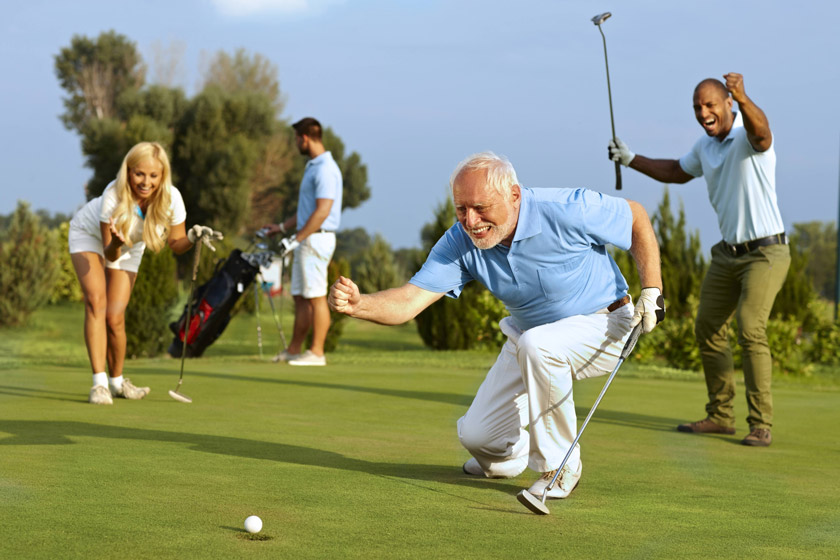
Protect from Ills
Heart disease, osteoporosis, depression, and diabetes are common diseases that can be dangerous for seniors. Fortunately, following a more active lifestyle will help avoid these diseases or alleviate the adverse effects of those who already have them.
Improve the Quality of Brain Functions
According to an NCBI study, a healthy body leads to a healthy mind, and seniors who exercise regularly have better cognitive health. Regular exercise has recently been shown to minimize the risk of developing Alzheimer’s disease or dementia by approximately 50%, according to a report conducted by the Alzheimer’s Research & Prevention Foundation.
Best Tips for Safe Exercising
- Choose comfortable walking shoes.
- Avoid uphill or downhill tracks for walking.
- Choose the Dumbbell weight based on your strength.
- Choose the right sport wears based on the season and with comfortable size for movements.

Tips for Safe Exercise Outdoors for Seniors
- First, double-check that you can safely exercise in your neighbourhood
- tracks and parks.
- Bring your identification and emergency contact details, as well as a small amount of cash and a mobile phone, mainly if you’re walking alone.
- Stay alert by not talking on the phone while walking and keeping the volume of your headphones down.
- Tell people where you’re going and when you’ll be back.
-
Always exercise in some places where other people are present.
-
During the day, dress in light or brightly coloured clothes and during the night wear reflective clothing and have a torch with you at all times.
-
Make sure your bike has lights on both the front and back.
Tips for Safe Exercise in Hot Weather
- Keep an eye on the weather forecast. Suppose it’s extremely hot or humid outside. In that case, it might be better to exercise indoors. You can watch videos online or fast walk in an air-conditioned building like a shopping center.
- Drink lots of water. Fruit juices are also excellent choices. It would help if you also stopped Caffeine and alcohol. If your doctor has instructed you to restrict your liquid intake, find out what to do when it’s sweltering outside.
- Dress in light-coloured, loose-fitting natural fabrics because light colours absorb less solar radiation.
- In summer, doing exercises in the morning is an excellent choice because it is usually cooler than noon.
Tips for Safe Exercise in Cold Weather
-
If the weather is too cold, it is better to stay at home and exercise by watching TV or YouTube exercise programs, and when you go out, be careful of icy fields and avoid slippery places.
-
Warming up your muscles in winter is essential in winter. So before starting your exercise, do some stretching.
- Wear the appropriate clothing—a variety of loose-fitting layers or examples so you would trap the warm air between the layers. Avoid wearing too tight clothing because it will prevent your blood from circulating freely and cause you to lose body heat.
- If the weather is rainy, you need waterproof sweatshirts or jackets, because you should keep your clothes dry.
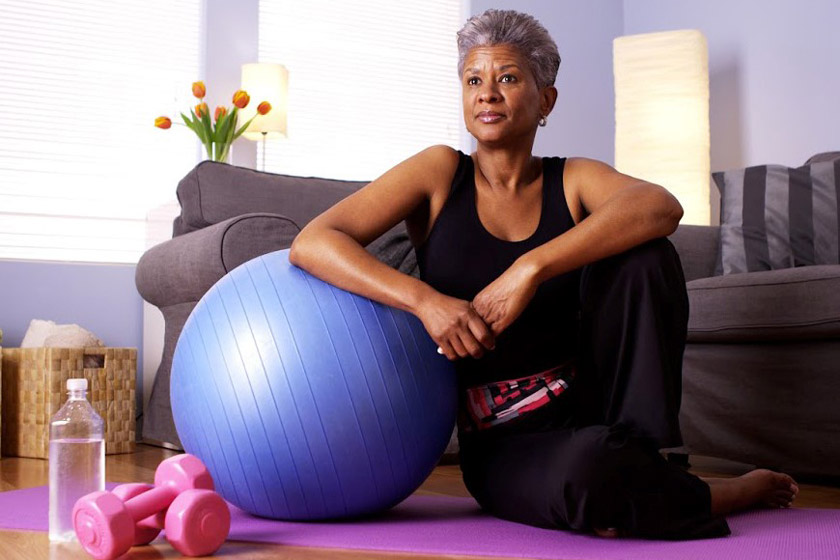
Exercises Seniors Should Avoid
Many standard mainstream workouts can be dangerous for older adults who have joint pain, atrophied muscles, posture issues, or balance issues. According to research, it is important to engage in all four exercises: stamina, strength, balance, and flexibility. Each one has its own set of advantages. Doing one kind can help you develop your ability to do the others, and variety can help you avoid boredom and injury. You will find activities that suit your fitness level and needs regardless of your age!
In the exercises seniors should avoid, you can find important tips for doing exercises safe and secure and know the dangers of exercise for seniors.
If you’re over 65, you probably need to stop with the following exercises:
- Squats with dumbbells or weights
- Bench press
- Leg press
- Long-distance running
- Abdominal crunches
- Upright row
- Deadlift
- High-intensity interval training
- Rock climbing
- Power clean
The Best Exercises for Seniors
Before starting an exercise program, meet with your doctor to make sure you’re safe enough to exercise and decide which workouts are best for your current fitness level. Generally, we have three types of exercises: low-intensity, moderate and high-intensity exercises. You can select your desired exercise from them.
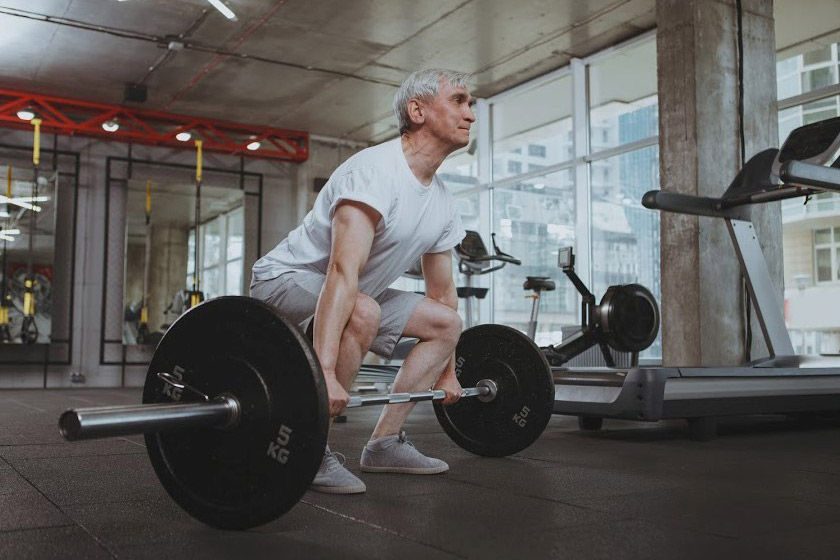
Low-Intensity Exercises
Moving rather than sitting or lying down is considered a light operation. These are examples of low-intensity exercises:
- Getting up to make a cup of tea
- Moving around your home
- Walking at a slow pace
- Cleaning and dusting
- Vacuuming
- Making the bed
- Standing up
Moderate Activities
Moderate exercise raises your heart rate, makes you breathe better, and feel warmer. If you can still speak but not sing when working at a low-intensity level, you’re working at a moderate intensity level. Here are the examples:
- Brisk walking
- Water aerobics
- Riding a bike
- Dancing
- Doubles tennis
- Pushing a lawnmower
- Hiking
High-Intensity Exercises
When you engage in high-intensity exercise, you will find yourself breathing quickly and deeply. You won’t be able to say more than a few words without pausing for a breath if you’re working at this stage.
In general, 75 minutes of extreme intensity exercise is equivalent to 150 minutes of moderate-intensity activity in terms of health benefits. If you put in more effort, most moderate-intensity tasks will become vigorous. Here you can see some high-intensity exercises:
- Jogging or running
- Aerobics
- Swimming fast
- Riding a bike fast or on hills
- Singles tennis
- Football
- Hiking uphill
- Energetic dancing
- Martial arts
Exercise is vital for older people, but it is not easy to know where to begin. It can’t be simple to re-enter the active environment if you haven’t worked out in a long time. There’s also a possibility that the exercises you are used to aren’t appropriate for your age anymore. Before starting an exercise program, visit your doctor to ensure you’re safe enough to exercise and decide which workouts are best for your current fitness level.
Stretching Exercises
Stretching activities are vital for seniors. Typically, our body produces lactic acid every day, so if we don’t do any stretching exercises, we can’t be free of the lactic acid, and we always feel exhausted.
Benefits of Stretching for Seniors
- Improve blood flow
- Improve our body motions that can save you from probable injuries
- Decrease stress and pains in our muscles
- Provide better feels for you.

Stretching Exercise Samples for Seniors
- Open arms widely
- Chin drop exercise
- Hula Hoop
- Yo-Yo
- Quad Pull
Safety Tips for Stretching Exercises
- Stretch your muscles after they’ve warmed up.
- After endurance or strength training, stretch.
- Don’t strain to the point of pain.
- While keeping a stretch, try to breathe normally.
- Always consult your doctor about the exercises you want to do.
Strength Exercises for Older Adults
Strong muscles allow you to remain independent and complete daily tasks such as getting out of a chair, climbing stairs, and carrying groceries easier. Keeping your muscles tight will help you maintain your balance and avoid falls and injuries caused by falls. When your leg and hip muscles are solid, you are less likely to fall. Certain people use weights to help them boost their ability. If you do, begin with light weights and gradually increase them. Others use resistance bands, which are stretchy elastic bands with different strengths. If you’re a novice, start exercising without the band or with a light band before getting used to it.
When you can comfortably do two sets of 10 to 15 repetitions with a bar or a stronger band (or more weight), add a round or move on to a stronger band (or more weight). At least two days a week, do strength exercises with all of your main muscle groups; however, don’t exercise the same muscle group on consecutive days. Here are a few strength-building exercises to get you started:
- Dumbbell
- Carrying groceries
- Gripping a tennis ball
- Overhead arm curl
- Arm curls
- Wall push-ups
- Lifting your bodyweight
- Using a resistance band
Here are we introduce one of the strength exercises in short:
Dumbbell Exercise for Seniors
Working with dumbbells if you don’t feel any pains in your body is so useful. Dumbbell exercise is an excellent activity to boost our muscles and make them strong.
Benefits of the Weight Training Program
- Boost strength in all parts of your body.
- With dumbbells, you can improve your joints’ health, balance and stability.
- Weight training is a good practice for reducing the glucose present in your blood and controlling your bad cholesterol.
- Control your weight.
- Increase your metabolism.
- Improve the density of bones.
But don’t forget to consult with your doctors and then start your training program. Also, you should do some warm-up activities before starting the dumbbell exercise. Besides, choosing the correct dumbbell weights for seniors is necessary.
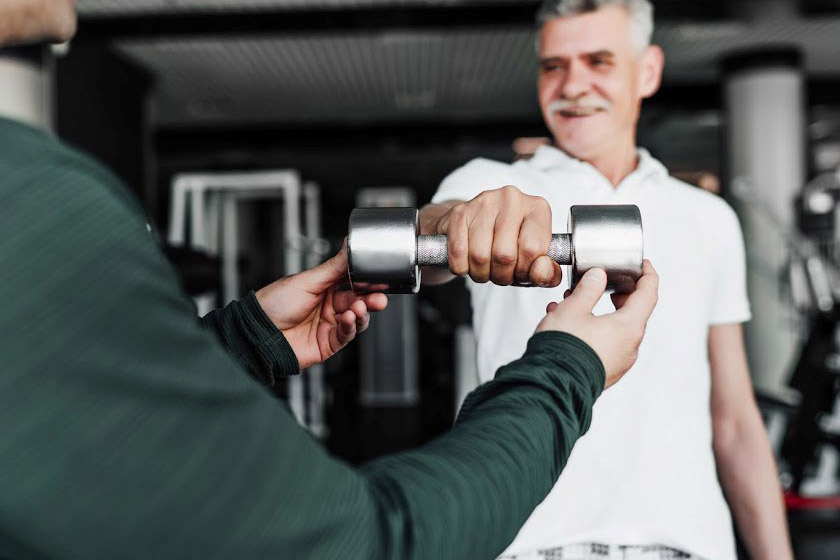
Which Dumbbell Exercises Are Suitable for Seniors?
- Overhead press
- Arm Cruel
- Triceps extension
- Shoulder squat
- Forward lunge
- Raise forward
- Bent over rows
Notice: If you want your body to get used to dumbbell exercise, you should set up a routine program. For example, you can start twice a week. And if you feel any problem during exercise, you should stop it and consult with your doctor.
Chair Yoga
Chair yoga, like water aerobics, is a low-impact exercise that increases muscle strength, agility, balance, and flexibility, which are all critical health factors for seniors. This is a simple yoga type that puts less strain on the muscles, joints, and bones than traditional yoga. Besides, chair yoga has been shown to benefit older adults’ mental health. Daily chair yoga practitioners experience improved sleep quality, fewer cases of depression, and a general sense of well-being. Don’t forget yoga for weight loss!
Great Chair Yoga Exercises for Seniors
- Seated cow stretch
- Overhead stretch
- Seated cat stretch
- Mountain pose
- Seated twist
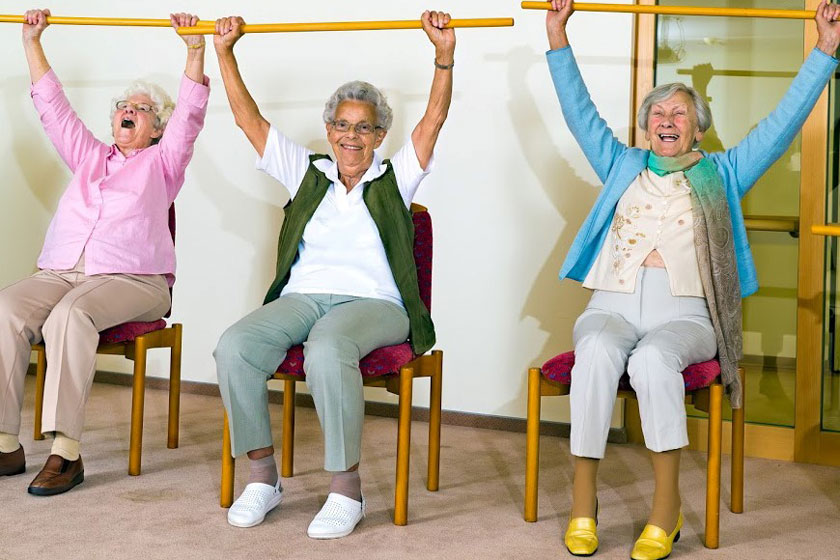
Resistance Band Workouts
These stretchy elastic strips add resistance to exercises while reducing body tension. These band are easy to use and can be performed by anyone. Resistance band exercises are suitable for at-home exercise and are becoming increasingly common among seniors due to materials’ relatively low upfront costs.
Resistance Band Workouts for Seniors
- Leg press
- Triceps press
- Lateral raise
- Bicep curl
- Band pull apart

Pilates
Pilates is a common low-impact exercise that has been around for over a century. Breathing, alignment, concentration, and core strength are all stressed in Pilates exercises, which usually use pads, Pilates balls, and other inflated accessories to help create strength without the tension of higher-impact practices. Pilates has been shown to help older adults strengthen their balance, core strength, and endurance.
Excellent Pilates Exercises for Seniors
- Mermaid movement
- Side circles
- Food slides
- Step-ups
- Leg circle

Bodyweight Workouts
For older adults, muscle loss may be devastating and crippling. Around a third of seniors have significant muscle loss, leading to hormone issues, reducing protein metabolizing capacity, and other issues. One of the most effective ways to combat muscle atrophy symptoms in older adults is to do bodyweight exercises. One of the main advantages of bodyweight exercises is their low cost. Bodyweight workouts need very little equipment; most only need workout clothes for seniors and a mat to cushion the impact with the floor.
Excellent Bodyweight Exercises for Seniors
- Squats to chair
- Step-up
- Bird dog
- Lying hip bridges
- Side-lying circles
Safety Tips
- During strength training, don’t hold your breath and breathe frequently.
- Exhale as you lift or drive, then inhale as you relax.
- If you’re confused about a specific workout, consult your doctor.
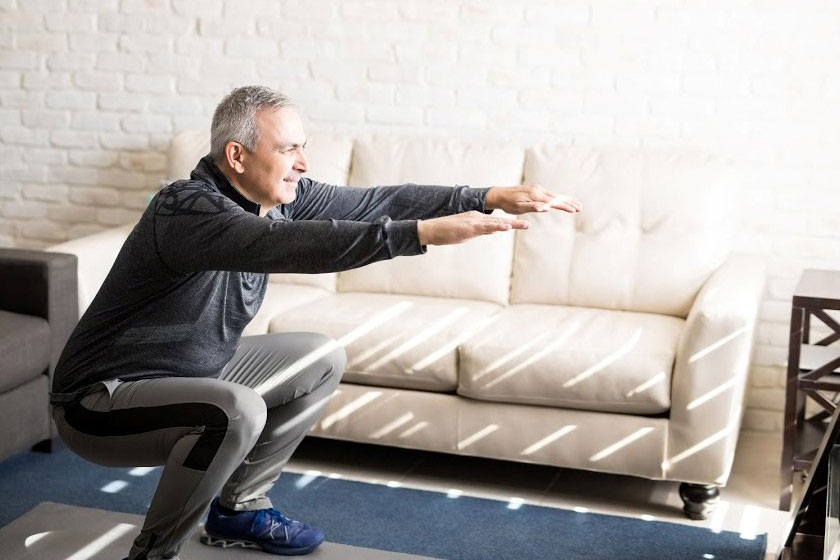
Endurance Exercises
Endurance exercises are good activities to improve our balance and increase our heart rate. Why increasing the heart rate is important? Because when our heart-pounding correctly, the blood in our veins circulates better. Endurance exercises are also a good choice for weight loss in the elderly. As we mentioned above, don’t forget to drink water during exercise. Also, endurance exercises are an enemy of diabetes, colon and breast cancer, heart disease and other physical issues. Walking, jogging, dancing, yard work, swimming or water sports, biking, climbing and tennis are good examples of endurance exercises.

Endurance Exercises for Seniors
- Walking
- Jugging
- Water sports for seniors
Famous Water Sports
- Water walking
- Pool push-ups
- Stand up paddleboarding
- Swimming
- Water aerobics

Safety Tips
- Warm up and cool down with a light exercise such as fast walking before and after your endurance workouts. Then don’t forget walking tips for seniors.
- Pay attention to your body: endurance exercises do not make you dizzy, cause chest pain or discomfort, or give you the sensation of heartburn.
- Drink plenty of water before, during, and after any exercise that causes you to sweat. If your doctor has advised you to reduce your fluid intake, consult your doctor about exercising and what to eat after a workout session.
Balance Exercises for Seniors
Balance exercises help older adults avoid trips, which are a common issue with severe consequences. Many lower-body strength exercises will also help you achieve balance.
List of Balance Exercises
- Tai Chi, a “moving meditation,” involves shifting the body slowly, gently, and precisely while breathing deeply.
- Standing on one foot.
- The heel-to-toe walk.
- The balanced walk.
- Standing from a seated position.
Safety Tips
- If you feel unsteady, have a comfortable chair or someone close to hanging on.
- If you’re confused about a specific workout, consult your doctor.
Exercises for Boosting and Building Muscles in Seniors
You can complete Power workouts to the point that you need a brief break before doing them for full health benefits. You can strengthen your muscles in a variety of ways, whether at home or in a gym. How can seniors build muscle? These are famous muscle building exercises in seniors:
- Carrying heavy shopping bags
- Yoga
- Pilates
- Tai chi
- Lifting weights
- Working with resistance bands
- Doing exercises that use your bodyweights, such as push-ups and sit-ups
- Heavy gardening, such as digging and shovelling
How Can We Start?
Before starting your exercise, you need to set a practical plan for a routine program. As a senior, you need at least 150 minutes of exercise each week.
You can divide your body activities into jogging, water sports, working with dumbbells, stretching acts, and balance practices. Generally, if you want to have a healthy body, you should have all of these activities. When you look at this average time, maybe you get worried and ready to make some excuses! But you don’t have to, because you can start from 10-15 minutes a day. Then you can develop your time and exercise more. However, don’t forget to choose the right exercise shoes for seniors to avoid injuries.
When starting a physical activity regimen, the secret to success and safety is to expand slowly from your current fitness level. Excessive exercise can lead to injury and disappointment. The best strategy is to keep moving forward at a steady pace.
How Much Physical Activity Do Seniors Require?
According to the Physical Activity Recommendations for Americans, moderate-intensity aerobic exercise, such as brisk walking or fast dancing, should be performed at least 150 minutes every week. It’s best to be involved at least three days a week, but everything is better than nothing. At least two days a week, you can engage in muscle-strengthening exercises such as lifting weights or doing sit-ups. The Physical Activity Guidelines also suggest combining various activities as part of your weekly physical activity.
Read more: Exercises to increase the physical strength of seniors

Tools for Starting Your Exercise
Due to the importance of losing weight in the elderly, dumbbells are suitable types of equipment to start with. But don’t forget to choose the correct dumbbell weights.
Another tool that you can use is a rubber. Rubbers are elastic materials that we can also use for doing some stretching exercises. Stretching is great for seniors because it can improve their joint strength and balance. If you can’t use dumbbells or rubber, you can practice with simple equipment like a chair.
Final words
Older adults must stay active as their abilities (mobility, stamina) and conditions allow since regular physical exercise is vital for healthy ageing. So set a plan, choose your favourite sport, select proper tools and begin your workouts.
Before starting any exercise, check with your doctor to find out adequate training for your age.
I was a runner in high school and college. But when I started working, I didn’t have enough time, and in 5 years, I officially started my sedentary life! I’m in my retirement, and I haven’t worked out for decades. Last year my husband and I decided to walk every day, but we ended up walking around the neighbourhood once a week. But now I’m ready to achieve my goal! I also want to increase my flexibility; even when I ran every day, I was not that flexible. Can I start with yoga or pilates?
You sure can! Although I would recommend Yoga because you are just starting. Some Pilates exercises may be hard for you. Don’t have a heavy start. Just exercise for 15 minutes a day and then gradually increase the time until you are comfortable with working out at least 30 minutes a day. Good luck! and you are making the right decision 🙂
It’s so nice to see you this excited. I agree with Joyce. Yoga can be a light and healthy start for you. The good thing about yoga is that as soon as you learn a few basic rules, you can practice it anywhere.
Recently I have gained a lot of weight because I quit exercising. I want to start again, but I just can’t find the energy. Does anyone know what a fast way to lose weight and get in shape is? or can anyone at least tell me how I can motivate myself to start exercising again? For some reason, I can’t accept the idea of working out again.
For starters, it’s neither wise nor healthy to lose weight fast! of course; several ways cause fast weight loss. But they most certainly are not healthy, and the worst thing, you will gain that weight as fast as you lost it! Start slow, just by walking and cutting out unhealthy foods. Weigh yourself every day, at a specific time; that’s the best motivation I know. After a week or two, you can increase your exercise time or intensity and trust me, you will have healthier food choices.
Although there are ways to lose weight safely, you should keep in mind that most fast methods are unhealthy.
For long-term weight control, a weight loss of 1 to 2 pounds a week is recommended. However, not all diets have this effect. Losing weight with low carb and low-calorie diets is effective. Still, this is not enough. Losing weight is possible if you follow a healthy diet and exercise regularly.
Yoga! Yoga and yoga. It is helpful not only for your body and physical health but also for your mental health. It makes you relax, decreases pulse rate, increases endurance and immunity. Moreover, it improves sleep, steadiness and balance. One good point about yoga is that it doesn’t need any special tools and instruments; you just need a matt and a suitable yoga cloth.
I can’t agree more! After my husband passed away, I became a depressed, gloomy person. Thanks to my friend, Lily, she forced me to visit a therapist. Long story short, the therapist offered yoga and ever since that day, my depression settled down, and I feel better, physically and mentally.
I think a morning walk is the best for aged ones, with little stretch exercises of course. If done in groups, it will be very much enjoyable actually. Enjoy the fresh morning air, with some childhood memories…
Doing household chores like dusting, vacuuming, mopping also keeps one fit.
Don’t sit for more than 1 hour continuously. Get up, have a short walk within the house.
Do not buy into the beliefs that you are too old but always exercise within your capacity to avoid injury. Consult a healthcare professional before you start.
I remeber the time when my mom was diagnosed with knee artritis. We all thought that she needed to rest more and walk less because she felt great pain when even taking some steps but to our surprise, the doctor advised her to walk for around 20 to 30 minutes a day. He also gave a special exercise for her knees. Believe it or not, she’s walking well now without taking any medication. Don’t underestimate doing sport and always consult your doctor.
My grandpa used to be a great runner back when he was younger. He really believed in cardio workouts and always encouraged us to follow in his footsteps. Thanks to his active lifestyle, he barely had to go to a doctor’s appointment. My grandpa could beat any of his grandchildren in a running contest. Unfortunately, his body couldn’t keep up with him as he got older. One day, he fell from a long staircase and lost the ability to walk and passed away a year after the accident. He was with us for 102 years and lived 101 of these years in good shape and health.
I strongly agree with the part about how it’s considerate to stay at home and follow an energizing workout routine on YouTube and other streaming services. My grandfather used to follow various YouTube exercise programs in the winter.